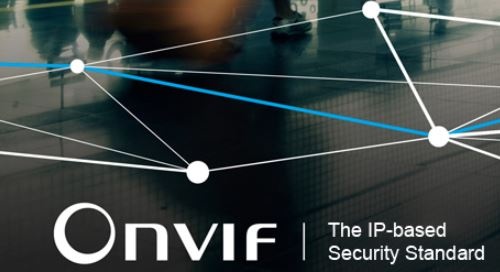Global Standards Group IEC Adopts ONVIF Specification for Access Control Standard
ONVIF, the leading global standardization initiative for IP-based physical security products, announced today that its newest access control specification has been adopted by the g...

ONVIF, the leading global standardization initiative for IP-based physical security products, announced today that its newest access control specification has been adopted by the global standards group International Electrotechnical Commission (IEC) as its new standard for Electronic access control systems, positioning the ONVIF specification as the global access control standard in countries, projects and industries all over the world.
The inclusion of the ONVIF specification by the IEC, which is playing a significant role in the continued development of the Internet of Things by establishing interoperability between electronic devices, marks the second time that ONVIF specifications have become IEC global standards, paving the way for further international adoption of ONVIF as part of security projects.
“The IEC’s adoption of the ONVIF specification for access control is a real validation of ONVIF’s strength and scope,” said Per Björkdahl, ONVIF Steering Committee Chair. “It also reflects multi-industry, multi-discipline collaboration for increased interoperability, whose importance is growing every day.”
The IEC 60839-11 System and components requirements standard for Alarm and Electronic Security Systems will adopt the specification that ONVIF developed for Access Control monitoring, based on web services. Slated for release in late April, IEC 60839-11 specifies minimum functionality, performance and testing methods for electronic access control systems and components used for physical access. The standard applies to electronic access control systems and components that are used in security applications for the granting of access and includes requirements for logging, identification and control of information.
ONVIF specifications were previously included in the 2014 release of the IEC 62676 standard for Video Surveillance Systems, the first international standard for video surveillance systems to be established. The ONVIF specification for video, which is based on Web Services, is referenced in IEC 62676 Part 2-3, which defines video transmission protocols for communication between network video clients and video transmitter devices. In addition to the IEC’s recent adoptions of ONVIF specifications, ONVIF plans to continue to support and collaborate with the IEC in developing future standards.
The IEC is one of three global sister organizations (IEC, ISO, ITU) that develop international standards for the world and is the leading organization for the preparation and publication of international standards for all electrical, electronic and related technologies. All IEC International Standards are established based on consensus and represent the needs of key stakeholders of every nation participating in IEC work.
Founded in 2008, ONVIF now consists of nearly 500 member companies in six continents and more than 5,500 Profile conformant products. With Profile S for streaming video; Profile G for recording and storage; Profile C for physical access control and the Release Candidates Profile A, for access control configuration, and Profile Q, for improved out-of-the-box functionality, ONVIF continues to work with its members to expand the number of IP interoperability solutions ONVIF conformant products can provide.












